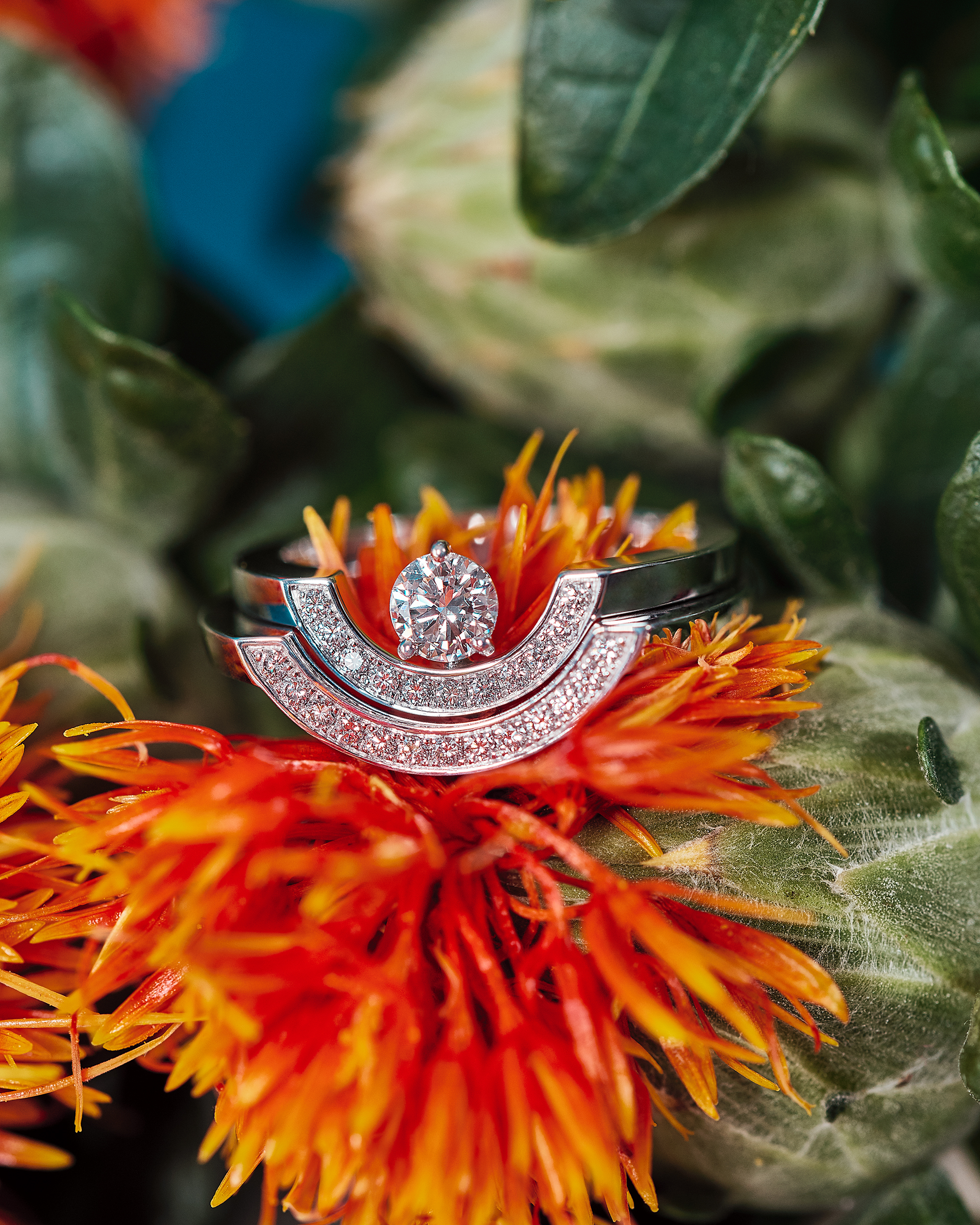White gold or platinum : which to choose for your engagement ring ?
White gold or platinum : which to choose for your engagement ring ?
Should you pick white gold or platinum for your engagement ring?
What are the differences between these two dazzling precious metals ?
Browse through our guide and find out which one is the one for you !
A white gold engagement ring
What is 18k white gold?
Pure gold is too malleable to be crafted with finesse and precision. Therefore, whether in fine or high jewelry, gold is always mixed with other metals, forming what is called an alloy.
The percentage of pure gold in the alloy is indicated by its karat. Pure gold is 24 karat. 18k gold (or 18 karat, or 750 parts per thousand) is composed of 75% pure gold and 25% other metals such as silver, zinc, and sometimes palladium.
Pure gold is naturally yellow. It’s the alloys that give rise to different colors, such as white gold.
If you’re torn between the three gold colors, we recommend our article on yellow, white, or rose gold.
What’s the difference between palladium white gold and traditional white gold?
Palladium white gold contains palladium in its alloy. Loyal.e’s white gold is exclusively palladium 18k white gold: it’s composed of 75% of pure gold, 13% of palladium, and 12% of a mixture of silver and copper. It’s the most used white alloy by Place Vendôme’s renowned jewelry houses.
Palladium -a metal derived from the platinum family- is noble, rare (even rarer than gold !) and extremely resistant. And more importantly, it has a distinctive and eternal dazzling white colour. Hence, unlike traditional white gold, palladium 18k white gold is an alloy of lasting brilliance and durability, that does not yellow over time.
What is white gold rhodium plating?
A jewel made of white gold requires one last additional step in its crafting : the rhodium plating. It consists in applying a thin layer of rhodium on the gold.
Rhodium is also a noble metal from the platinum group. Think of rhodium plating as the icing on the cake—this lustrous finish makes white gold truly shine and adds an extra layer of protection, keeping your jewelry looking pristine for years to come.
What are white gold’s advantages?
White gold has an undeniable allure, thanks to its timeless color and radiant reflections.
Moreover, it’s non-corrosive and incredibly durable, making it perfect for everyday wear and ensuring longevity across generations. It notably withstands corrosion, pollution, high temperatures, and humidity.
What are white gold’s downsides?
With time, the thin layer of rhodium that protects the gold may fade. Your jewel will then be more prone to wear from friction, looking a bit dull. Thankfully, a quick trip to the jeweler for a rhodium plating touch-up can bring back that dazzling shine, just like new. If needed, this small procedure can be done every ten years.
A platinum engagement ring
What’s platinum in jewelry?
Platinum 950 consists of 95% pure platinum and is the purest metal used in jewelry. This noble metal, naturally white, stands out for its great malleability and unparalleled gray reflections.
What are platinum’s advantages?
Platinum is known for its everlasting brilliance -it doesn’t yellow nor tarnish with time. It’s resistant, non-corrosive, and hypoallergenic. It complements even the most sensitive skin with radiance.
What are platinum’s downsides?
Platinum is even more malleable than gold, which makes a platinum ring more prone to scratches than its palladium white gold counterpart. In fact, platinum is so malleable that some rings cannot be made of platinum, as they might risk deforming over time.

Is there a price difference between palladium white gold and platinum?
A jewel made of platinum is more expensive than its equivalent in 18k white gold, for various reasons:
First, platinum is a rarity in nature : it’s 20 to 30 times scarcer than gold.
Platinum is also denser than gold: it takes more of it to make the same ring. The weight in platinum of a ring will be greater than its equivalent’s weight in gold.
Finally, because of platinum’s density and resistance, crafting it requires more time in the workshop. It is also more difficult to melt than gold: its melting point is at 1768°C, compared to 1064°C for gold
So, which should it be: platinum or white gold?
When it comes to selecting the metal for your engagement ring or wedding band, both 18k palladium white gold and platinum would make a perfect choice. Endlessly recyclable, they serve as enduring symbols of everlasting love. And both these precious metals hold their own charm :
The reflection of platinum is subtly grayer than that of white gold, but the difference is barely noticeable to the naked eye. White gold will require a bit more maintenance over the years to maintain its initial luster. However, being more malleable, platinum will be more prone to scratches.
Ultimately, there’s no wrong choice here—just the one that speaks to your heart!





